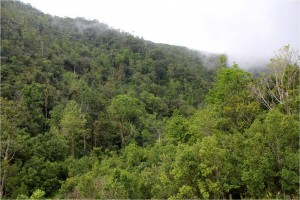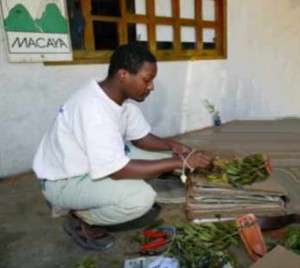Research
 Our research focuses on the native and endemic fauna and flora of Haiti and their unique habitats. We place a high value on studying the status of native species to steer conservation efforts and assess the biological value of local ecosystems. SAH collaborates with international partners who assist in biological expeditions, population surveys, natural area inventories, phylogenetic research, and captive breeding of threatened species. Research has resulted in many new discoveries and publications that increase our knowledge of Haiti’s natural history and an appreciation her natural heritage.
Our research focuses on the native and endemic fauna and flora of Haiti and their unique habitats. We place a high value on studying the status of native species to steer conservation efforts and assess the biological value of local ecosystems. SAH collaborates with international partners who assist in biological expeditions, population surveys, natural area inventories, phylogenetic research, and captive breeding of threatened species. Research has resulted in many new discoveries and publications that increase our knowledge of Haiti’s natural history and an appreciation her natural heritage.
 The earliest research efforts focused on surveys of migratory bird populations in the wintering habitats of cloud forests of southern Haiti. During the 2004-2006 period, SAH partnered with Vermont Center for Ecostudies to conduct population studies of North American migratory species, such as the threatened Bicknell’s Thrush. These research efforts are ongoing with continued support from our international partners.
The earliest research efforts focused on surveys of migratory bird populations in the wintering habitats of cloud forests of southern Haiti. During the 2004-2006 period, SAH partnered with Vermont Center for Ecostudies to conduct population studies of North American migratory species, such as the threatened Bicknell’s Thrush. These research efforts are ongoing with continued support from our international partners.
 In 2006, a multi-institutional effort was launched to conduct a biological study of Macaya National Park. Botanists from the Jardin Botanico Santo Domingo assisted SAH to collect specimens of the vascular flora of the park; mollusk specialists from Slovakia surveyed the diversity of living and fossil snails and explored the caves of the park; VCE contributed to a study of the trends among bird species; and plant ecologists from Université Libre de Bruxelles compared the diversity of tree, shrubs and herbs of the park’s cloud forests with other similar forests of the Caribbean. The studies were compiled in a single publication to highlight the biodiversity of Macaya, among the most important in the Caribbean.
In 2006, a multi-institutional effort was launched to conduct a biological study of Macaya National Park. Botanists from the Jardin Botanico Santo Domingo assisted SAH to collect specimens of the vascular flora of the park; mollusk specialists from Slovakia surveyed the diversity of living and fossil snails and explored the caves of the park; VCE contributed to a study of the trends among bird species; and plant ecologists from Université Libre de Bruxelles compared the diversity of tree, shrubs and herbs of the park’s cloud forests with other similar forests of the Caribbean. The studies were compiled in a single publication to highlight the biodiversity of Macaya, among the most important in the Caribbean.
 Beginning in 2010, biological expeditions led by Dr. Blair Hedges (Penn State University) have been conducted at selected sites throughout Haiti where the last remaining natural forests are found in the country. Amphibians, reptiles, birds and plants have been surveyed and dozens of first observations and new species have been discovered. The sites have primarily targeted the high elevation areas of southern Haiti where the endemic flora and fauna is mostly distributed and the last remaining primary forests are found.
Beginning in 2010, biological expeditions led by Dr. Blair Hedges (Penn State University) have been conducted at selected sites throughout Haiti where the last remaining natural forests are found in the country. Amphibians, reptiles, birds and plants have been surveyed and dozens of first observations and new species have been discovered. The sites have primarily targeted the high elevation areas of southern Haiti where the endemic flora and fauna is mostly distributed and the last remaining primary forests are found.



